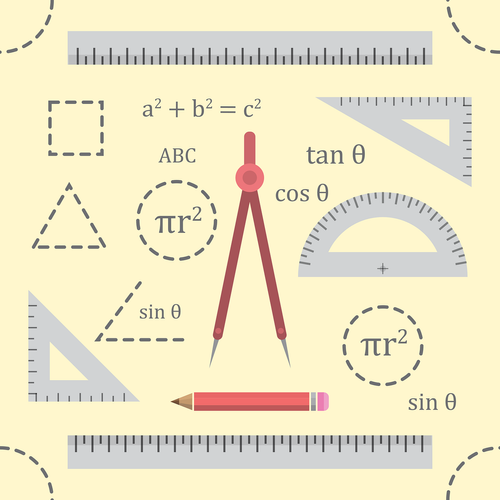Standards Packages
iTeh together with SIST has developed and compiled a comprehensive collection of standard packages to support your standard requirements. Our packages cover an array of content that includes quality management, risk management, road vehicles, machine safety, and much more. With over 200 packages to choose from, you are sure to find a collection to suit your standard needs.
Latest Standards
IEC 63380-1:2025 defines the secure information exchange between local energy management systems and electric vehicle charging stations. The local energy management systems communicate to the charging station controllers via the resource manager. This document specifies use cases, the sequences of information exchange and generic data models.
- Draft167 pagesEnglish languagesale 10% offe-Library read for1 day
- Draft12 pagesEnglish languagesale 10% offe-Library read for1 day
This document contains selected examples for good practice approaches for the management of assets of wastewater systems. This document is intended as a supporting document for ISO 24516-3 and ISO 24516-4, which contain guidelines for the management of assets of wastewater systems. As such, this document can contribute to realize value from existing assets when following the guidelines for the management of assets of wastewater systems approaches in the strategic, tactical and operational plans given in ISO 24516-3 and ISO 24516-4. NOTE A recapitulative table of the examples covered in this document is provided in Annex A.
- Technical report33 pagesEnglish languagesale 15% off
IEC 61987-41: 2025 provides: • a characterization for the integration of process analysers in the Common Data Dictionary (CDD), • generic structures for operating lists of properties (OLOP) and device lists of properties (DLOP) of measuring equipment in conformance with IEC 61987-10, • generic structures for Dynamic Data, e.g. for condition monitoring of process analysers. The generic structures for the OLOP and DLOP contain the most important blocks for process analysers. Blocks pertaining to a specific equipment type will be described in the corresponding part of the IEC 61987 standard series. Similarly, equipment properties are not part of this document. Thus, OLOP, DLOPs and LOPDs for selected process analysers families will be found in the IEC CDD.
- Draft21 pagesEnglish languagesale 10% offe-Library read for1 day
IEC 61869-20:2025 This part of IEC 61869 specifies the requirements for the safe design and operation, and tests for the safety of instrument transformers whose highest voltage for equipment is higher than 1 kV AC or 1,5 kV DC. Low power instrument transformers are not covered by this document.
- Draft15 pagesEnglish languagesale 10% offe-Library read for1 day
- Draft3 pagesEnglish languagesale 10% offe-Library read for1 day
IEC 63270-1:2025 provides guidance on the functional structure model, procedure, method, interface of function blocks. It also offers guidance on data requirements for predictive maintenance of equipment, devices and systems for industrial automation applications. Condition monitoring is not only within the scope of this document but can also be an important input for predictive maintenance.
- Draft44 pagesEnglish languagesale 10% offe-Library read for1 day
The purpose of this document is to provide customers and their suppliers with a document specifying the notions of “construction” and “management” of product dependability and safety (RAMS).
It offers programme directors and project managers information likely to help them:
— determine the tasks to be performed and the application procedures, according to the specific nature of the programme and its goals;
— define and implement the provisions necessary for performing these tasks;
— within programme execution, situate the various tasks involved in constructing and managing the RAMS of a product.
This document applies to all programmes that involve customer/supplier relation.
RAMS management concerns not only all the products covered by these programmes, but also the components of these products and the production and support resources and processes to be implemented.
The provisions of this document can be negotiated at all levels between the parties directly concerned by a given programme. This implies, on the part of the ordering parties, that each lower level is provided with the information needed to perform the tasks and meet the specified targets. This also implies, on the part of suppliers, an escalation of information pertaining to the RAMS results of the products for which they are responsible.
This document is mainly concerned with the technical aspects, aspects of a legislative (in particular safety at work and regulatory conformity) and confidential nature are not dealt with in this document.
- Standard44 pagesEnglish languagesale 10% offe-Library read for1 day
The purpose of this document is to provide customers and their suppliers with a document specifying the notions of product reliability "construction" and "management".
It offers programme directors and project managers information likely to help them:
- determine the tasks to be performed and the application procedures, according to the specific nature of the programme and its goals;
- define and implement the provisions necessary for performing these tasks;
- within programme execution, situate the various tasks involved in constructing and managing the reliability of a product.
This document applies to all programmes (in particular aeronautical, space and armament programmes).
These reliability construction procedures concern not only all the products and its constituents covered by these programmes, but also the means and manufacturing processes to be implemented for their realization.
The provisions of this document can be negotiated at all levels between the parties directly concerned by a given programme. This implies, on the part of the customer, that each lower level is provided with the information necessary to perform tasks and meet the specified targets.
- Standard30 pagesEnglish languagesale 10% offe-Library read for1 day
This document defines the common terms, abbreviations and references used throughout the EN 9300 series of standard parts.
- Standard41 pagesEnglish languagesale 10% offe-Library read for1 day
This document specifies a test method for determining the fire resistance of various elements of construction when subjected to fire exposure conditions, represented with standardized time-temperature curves. The test data thus obtained will permit subsequent classification on the basis of the duration for which the performance of the tested elements under these conditions satisfies specified criteria.
- Standard48 pagesEnglish languagesale 15% off
This document provides recommendations, requirements and checklists which can be used to support the specification and field testing of cryptographic modules in their field within an organization’s security system. The cryptographic modules have an overall security rating commensurate with the four security levels defined in ISO/IEC 19790:2025, to provide for: — a wide spectrum of data sensitivity (e.g. low-value administrative data, million-dollar funds transfers, life-protecting data, personal identity information, and sensitive information used by government), and — a diversity of application environments (e.g. a guarded facility, an office, removable media, and a completely unprotected location). This document is limited to the security related to the cryptographic module. It does not include assessing the security of the field or application environment. It does not define techniques for the identification, assessment and acceptance of the organization’s operational risk. This document applies to the field testers who perform the field testing for the cryptographic modules in their field and the authorizing officials of cryptographic modules.
- Technical specification44 pagesEnglish languagesale 15% off
This document establishes the currently recognized approaches and special considerations needed when evaluating the in vitro and in vivo performance of absorbable metals and implants fabricated, in whole or in part, from them. This document describes how the evaluation of these metals can differ from those utilized for permanent non-absorbable implantable implants (or subcomponents), in that absorbable metal implants (or subcomponents) are – by design – intended to be absorbed in their entirety by the host. This document provides guidance regarding the materials considerations, in vitro degradation/fatigue characterization, and biological evaluation of medical implants made of absorbable metals. The provided content is intended to deliver added clarity to the evaluation of these materials and implants to increase awareness of critical factors and reduce potential for generation of erroneous or misleading test results. While this document and the herein described referenced standards contain many suggested alterations or modifications to currently practiced procedures or specifications, the provided content is intended to complement, and not replace, current conventions regarding the assessment of implantable implants. This document covers the evaluation of absorbable metal specific attributes in general and is not intended to cover application or implant specific considerations. Thus, it is important to consult relevant implant and/or application specific standards. This document does not apply to non-absorbable or non-metallic components (e.g. polymeric coatings, pharmaceuticals, non-absorbable metals) used in conjunction with absorbable metal implants.
- Technical specification14 pagesEnglish languagesale 15% off
IEC 62290-2:2025 specifies the functional requirements of UGTMS (urban guided transport management and command/control systems) for use in urban guided passenger transport lines and networks. This document is applicable for new lines or for upgrading existing signalling and command control systems. The IEC 62290 series specifies the functional, system and interface requirements for the command, control, and management systems intended to be used on urban, guided passenger transport lines and networks. These systems are designated herein as urban guided transport management and command/control systems (UGTMS). UGTMS cover a wide range of operations needs from non-automated (GOA1) to unattended (GOA4) operation. A line may be equipped with UGTMS on its full length or only partly equipped. The IEC 62290 series does not specifically address security issues. However, aspects of safety requirements may apply to ensuring security within the urban guided transit system. The main objectives of this series are as follows: * to provide a baseline system description and functional requirements specification for a transport authority to use in a request for proposal, * to provide recommendations for those transport authorities wishing to acquire an interoperable or interchangeable system. It is the responsibility of the transport authority concerned to decide on how to apply the IEC 62290 series and to take into account their particular needs. This document is applicable to applications using * continuous data transmission, * continuous supervision of train movements by train protection profile, and * localisation of trains by onboard UGTMS equipment (reporting trains), and optionally by external wayside (and optionally onboard) device. In this document, the functional requirements set the framework to which detailed functions are added to define any generic or specific application. Because of that, although this document is applicable as a basis to define SRS, FIS and FFFIS, elements can be added for a generic or specific application. This third edition cancels and replaces the second edition published in 2014. This edition constitutes a technical revision. This edition includes the following significant technical changes with respect to the previous edition: a) the functions 5.1.4.5 Stopping a train en route, 5.1.5.4 Monitor speed limit at discrete location, 5.5.5 Manage UGTMS transfer tracks, 5.6.4.1 Monitor passenger emergency calls and 6.2.4 Ensure connecting services have been deleted; b) the functions 5.5.11 Manage train washing, 5.5.12 Manage non-stopping areas and 6.3.4 Perform progressive shutdown have been added; c) many of the requirements have been reworded: changes in their wording could be only minor and editorial, or it could have technical consequences; d) some requirements of the second edition have been moved from one function/subfunction to another; e) some requirements have been deleted; f) some new requirements have been added in the existing functions; g) an informative annex giving the reader some user’s recommendations about this document has been added; h) another informative annex giving some typical performance-related criteria has been also added. i) an informative annex providing a summary of applicability of functions and subfunctions (mandatory or optional) depending on GOA has been added. In order to avoid any disturbance in the use of the document, when functions or requirements of IEC
- Draft83 pagesEnglish languagesale 10% offe-Library read for1 day
This document lays down the requirements for the HBES Point API extension to the EN 50090 series, allowing vendor independent communication between smart home and building devices on IPv6 networks.
- Draft192 pagesEnglish languagesale 10% offe-Library read for1 day
This document specifies the characteristics of multilayer mechanical locked floor covering with a wear-resistant and decorative surface layer supplied in panels (either tile or plank form). The floor panels are considered suitable for domestic and commercial levels of use and designed for floating installation.
This document does not apply to resilient floor panels for loose-laying according to EN ISO 20326, to multilayer wood floorings according to EN 13489, to wood veneer floor coverings according to EN 14354, to laminate floor covering according to EN 13329, EN 14978 and EN 15468 nor to products specified in EN ISO 10581, EN ISO 10582, EN ISO 24011, EN 12104 and ISO 14486.
This document is applicable to areas which are subject to frequent wetting, e.g. bathrooms, laundry rooms or saunas, only if specified by the producer.
This document also includes requirements for marking and packaging.
In Annex A (informative), optional properties are given. In Annex B (informative), a test method for the classification of the flexibility is given.
- Standard15 pagesEnglish languagesale 10% offe-Library read for1 day
This document specifies a test method for determining the leak tightness and the ease of operation and stop resistance of a valve made of thermoplastic material following an impact applied to the operating device.
- Standard12 pagesEnglish languagesale 10% offe-Library read for1 day
This document specifies a method for determining the scratch properties of plastics under defined conditions. The method defined in this document is used to investigate the behaviour of specified types of specimens under the scratch conditions defined and for classifying the type of scratch of specimens within the limitations inherent in the test conditions. It can also be used to determine comparative data for different types of material by means of a so-called scratch map in which the types of scratch behaviour for each set of test conditions of test load and test speed are determined using the basic method of constant-load testing, and also by means of the so-called critical normal load determined using an alternative method of linearly increasing load testing. The method is suitable for use with the following range of materials. — thermoplastic moulding, extrusion and casting materials, including filled and reinforced compounds in addition to unfilled types; — thermosetting moulding materials, including filled and reinforced compounds; — thermosetting sheets, rigid thermoplastic moulding and extrusion materials, including filled and reinforced compounds in addition to unfilled types. The method specifies the preferred dimensions for the test specimen and the preferred scratch-tip geometry.
- Standard18 pagesEnglish languagesale 15% off
This document establishes conformance testing for the requirement described in ISO/IEC 24787-2, which is: — work-sharing on-card biometric comparison. Measuring the performance of on-card biometric comparison algorithms such as error rates or speed is not within the scope of this document.
- Standard6 pagesEnglish languagesale 15% off
Benefits

Full Standards Solution
Our catalog includes not only latest standards but also full meta information about related standardization project lifecycle.

Cost Effective
Our PRICE MATCH GUARANTEE policy with multi-level volume discounts gives our clients the best option in the market. In addition, you can get access to the standards for 3, 10, or 30 days.

Stay Notified
Get alerted to the latest revisions and new standards in the Weekly Newsletter. Standards are constantly changing. Don’t miss a revision that can impact your business.
About Us
iTeh Inc is a software development and IT consulting team of professionals who provide consulting, development and implementation of solutions for all types of businesses.
In cooperation, with the Slovenian Institute of Standardization (SIST), we create a unique solution that covers all aspects of the lifecycle of Standardization organizations. iTeh Standards is a part of the solution that helps SIST to provide and sell their products to Customers.
iTeh Standards Store is an evolving project, our goal is to build long-term relationships with our customers. We believe in delivering quality services to solve our customers' challenges and define success by exceeding our customers' expectations. We are always ready to listen and our experience allows us to provide our customers with helpful effective suggestions. You can contact us by email.
We are committed to providing the best possible experience for our customers.
Compliance with international standards is increasingly becoming one of the key competitive advantages in the global market. Our company creates all conditions for the most comfortable implementation of new documents and norms in the processes carried out by your organization. Some of the key advantages of working with us are:
- Cost-effective - multi-level discounts and permanent updates of the functions give our clients the best option on the market.
- e-Library - access to standards for a period of time of your choice. It is a cost-effective solution for keeping updated with the newest standards.
- Company-wide documents - create a company account and connect all employees with access to purchased standards, e-Library documents, and packages.
- All in one spot - all purchased standards are kept in one place with controlled access by the account administrator.
- Client-centric - providing quality consulting is the prerogative and incentive to create new products that accompany your success and scale.
- 24 / 7 client support
We are dedicated to building mutually beneficial and long-term relationships with our clients. That is why our team focuses on creating services to help our customers develop and achieve new productive results.
























